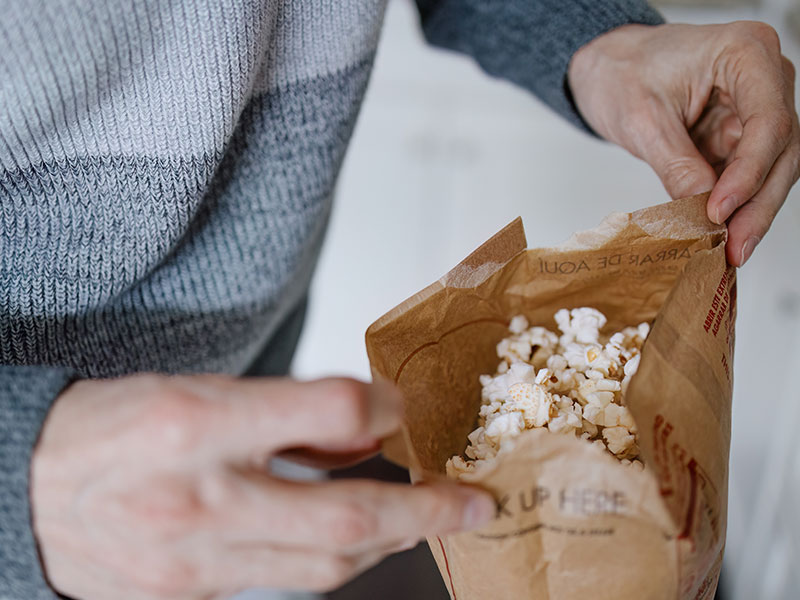When a person hears the term “forever chemicals,” it is unlikely that their immediate reaction is, “Yum! I want that inside my body!” Yet these so-called forever chemicals — technically known as per- and polyfluoroalkyl substances (PFAS), as well as chemicals like bisphenols— are absolutely everywhere. It is a statistical certainty that a person reading this article has forever chemicals in their bloodstream, and perhaps in other tissues.
Substances like PFAS and PFOA (perfluorooctanoic acid) are known as forever chemicals because they do not break down either in the natural environment or in our own bodies. It is this very versatility that makes them so popular among businesses; smear some forever chemicals on a cooking pan and suddenly you have a non-stick pan. Put them on a fabric and perhaps your shirt will be stain-proof.
Although some regulators may want to monitor these chemicals to learn about their possible health effects, one can bypass them through a process known as regrettable substitution: When one chemical is banned, scientists simply develop a slightly different molecule that performs the same basic function but has not been banned.
Through this process, it is now an overwhelming likelihood that products you use have forever chemicals like PFAS inside them. PFAS have been linked to high blood pressure, heart attacks, strokes liver disease, increased risks of kidney and testicular cancer and even fertility problems. In the words of Dr. Sara Brosché, Science Advisor with the International Pollutants Elimination Network, the PFAS in our environment and bodies could create a future not dissimilar to dystopian science fiction like “The Handmaid’s Tale.”
“PFAS are related to issues around fertility and endocrine disruption,” Brosché said. She noted that “The Handmaid’s Tale” involves a fertility crisis partially caused by environmental pollution that results in a patriarchal and authoritarian society. “Not the whole scenario — obviously that has a lot of other implications — but just looking at the premise of, what if we cannot reproduce anymore?”
Here are six of the common products that contain PFAS or other forever chemicals.
 Man Opens a Bag of Microwave Popcorn (Getty Images/Grace Cary)
Man Opens a Bag of Microwave Popcorn (Getty Images/Grace Cary)
If you want to enjoy some quality science fiction to escape from the depressing reality of PFAS — whether it’s “Children of Men” or something else — chances are you might enjoy doing so with a snack. Should you choose a nosh, you’d probably be advised to
stay away from microwaveable popcorn. According to a March 2023 study by the International Pollutants Elimination Network (IPEN), all of the microwaveable popcorn brands studied in their survey — including the American Popcorn Company, which makes Jolly Time; Conagra, which makes Act II; Ramsey Popcorn, which makes Cousin Willie’s; and Preferred Popcorn — had PFAS in their bags. The lists of PFAS are like an alphabet soup: Jolly Time and Act II bags often had perfluorobutanoic acid (PFBA) and perfluorohexanoic acid (PFHxA); Cousin Willie’s bags often had fluorotelomer alcohols (FTOHs); and Preferred Popcorn bags often had FTOHs and PFHxA.
 Fried Egg On Non-Stick Frying Pan (Getty Images/Maryna Terletska)
Fried Egg On Non-Stick Frying Pan (Getty Images/Maryna Terletska)
Anyone who has cooked with a sticky pan or pot knows how frustrating it is when the food sticks to the utensil instead of landing on your plate. When people try to imagine a pan or other piece of cookware that does not stick to your food, they usually think of the word
“teflon”; that said, it must be emphasized that there are countless other PFAS used for nonstick cookware that are not teflon. All of them, however, are chemicals that people do not want in their food — and unfortunately their wish often is not granted. As revealed by a
2022 study in the journal Science of the Total Environment, a single surface crack in the Teflon coating of a frying pan can eject as many as 9,100 plastic particles into the body. Many of those particles will, of course, contain the PFAS that the pan is supposed to use to separate your food from your cookware.
 Print Receipt (Getty Images/Image Source)
Print Receipt (Getty Images/Image Source)
If you have ever purchased an item from a store that uses traditional receipt paper, you’ve probably noticed that that paper is not exactly like ordinary paper. It tends to be shinier and more solid; sometimes receipt paper is so slippery that it is difficult to write on it with a pen. That is because 80% of receipt paper used by large retailers contains a toxic forever chemical known as
bisphenol S (BPS) according to a March 2023 study by Ecology Center. Other types of paper that can be described as “shiny” and “slippery” also contains PFAS, such as fast food wrappers.
Want more health and science stories in your inbox? Subscribe to Salon’s weekly newsletter Lab Notes.
 People walking under umbrellas during a rainy day in Shibuya. (Getty Images/DuKai photographer)
People walking under umbrellas during a rainy day in Shibuya. (Getty Images/DuKai photographer)
PFAS and other forever chemicals are particularly popular among manufacturers because they can help make products water-proof. This is why umbrellas, shower curtains and other plastic products that need to be water-resistant often contain one or a multitude of PFAS. The very slipperiness that you want on the top of your umbrella (but not under your feet) is, when it comes to this particular product, a double-edged sword.
 Makeup brushes and cosmetics (Getty Images/Songsak rohprasit)
Makeup brushes and cosmetics (Getty Images/Songsak rohprasit)
In the 1989 Tim Burton movie “Batman,” a villain terrorizes Gotham City by putting dangerous chemicals in common household products like cosmetics. Instead of making people look or feel better, the new products would kill you and leave you with a warped rictus grin on your face. While the situation with modern cosmetic products is nowhere near that dire, the Food and Drug Administration’s website
sums up the situation quite aptly: “Certain PFAS are also intentionally added as ingredients in some cosmetic products, including lotions, cleansers, nail polish, shaving cream, foundation, lipstick, eyeliner, eyeshadow, and mascara. These PFAS are used in cosmetics to condition and smooth the skin, making it appear shiny, or to affect product consistency and texture. ”
 Blue sofa with light blue rug (Getty Images/Westend61)
Blue sofa with light blue rug (Getty Images/Westend61)
At this point you have likely figured out the pattern in much of the PFAS applications here — it is often used to make products more resistant to stains of various kinds. In the case of carpets and furniture, this is particularly ironic because an
April 2023 study in the scientific journal AATCC Journal of Research revealed that these PFAS are not even the best way to make indoor upholstery stain-resistant. Indeed, simply using existing and different types of fabrics in creative ways is just as effective if not more so at producing stain-resistant fabrics than using PFAS — and, of course, with far less risk to the health of the people using them.
Read more
about forever chemicals
 Man Opens a Bag of Microwave Popcorn (Getty Images/Grace Cary)
Man Opens a Bag of Microwave Popcorn (Getty Images/Grace Cary) Fried Egg On Non-Stick Frying Pan (Getty Images/Maryna Terletska)
Fried Egg On Non-Stick Frying Pan (Getty Images/Maryna Terletska) Print Receipt (Getty Images/Image Source)
Print Receipt (Getty Images/Image Source) People walking under umbrellas during a rainy day in Shibuya. (Getty Images/DuKai photographer)
People walking under umbrellas during a rainy day in Shibuya. (Getty Images/DuKai photographer) Makeup brushes and cosmetics (Getty Images/Songsak rohprasit)
Makeup brushes and cosmetics (Getty Images/Songsak rohprasit) Blue sofa with light blue rug (Getty Images/Westend61)
Blue sofa with light blue rug (Getty Images/Westend61)